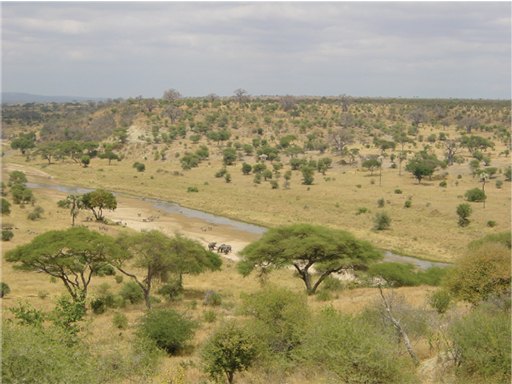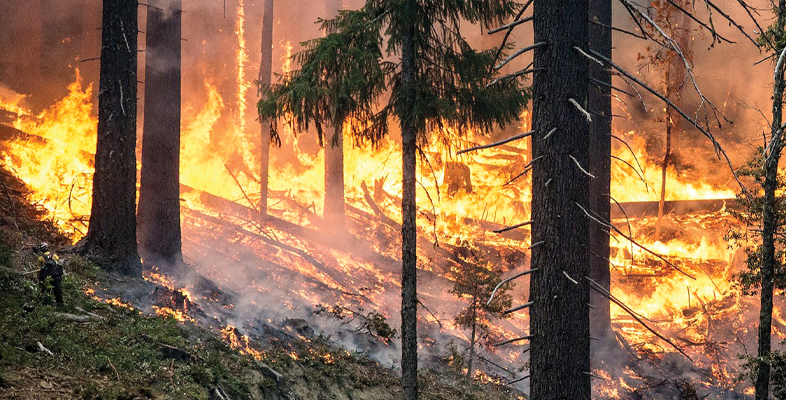1.5 Fire frequency
How often a fire re-burns an area, the fire frequency, has significant effects on ecosystem structure and function. The essential nature of many ecosystems – the species present, their size, age and density – depends on the frequency of fire. If an area burns before plants have developed fire resistance or before they have started producing seeds, these species may be lost from the ecosystem. Conversely if fire becomes rare, those species that require fire to reproduce or persist, for example, the Fynbos of South Africa, will be lost.
One way of looking at the effects of fire frequency on ecosystems is to look at how an ecosystem would change if fire frequency is altered. For example, savannahs are amongst the most fire-prone biomes on Earth and are characterised by varying mixtures of both tree and grass biomass (Figure 3).

How trees and grasses can coexist in the long term has puzzled ecologists for years. This is because conventional plant succession theory would suggest that highly productive savannahs (with adequate rainfall) are unstable and should progress towards closed canopy forest. The reason why this doesn’t happen is because fire frequency controls the recruitment of savannah trees, particularly the growth of saplings into the tree layer. Unlike mature trees, saplings cannot withstand or avoid fire damage because they are too short. Recurrent disturbance by fire therefore stops saplings from reaching a size where they escape through a disturbance-free ‘recruitment window’ into the canopy layer where they suffer less fire damage and survive.
-
What would happen to a savannah biome if fire frequency was drastically increased?
-
A high frequency of burning can result in the loss of all trees and the complete dominance of grass.
Conversely if fire is suppressed, for example due to intervention by humans, the increased recruitment of saplings can result in an increase in closed canopy forest at the expense of grass. In some places in Southern Africa, forests have replaced savannah (in areas where water is sufficient) 10–30 years after fire suppression.
The following section looks at the effect of fire on plants. Many plants have fire-adaptive traits that have either arisen in response to different fire regimes (i.e. are adaptations) or have arisen in response to some other environmental factor and persist because of their survival value in fire-prone landscapes. There are some plant species that are dependent on fire for survival.
